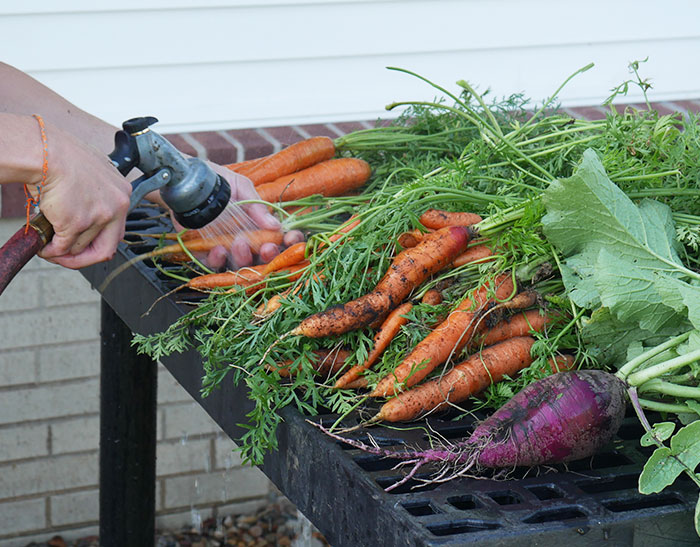Lacking Vegetable Production

As warm-season vegetable crops begin to reach their peak production and harvest stage, some gardeners unfortunately may find themselves vexed by the question, “Why am I not getting a crop?” Ultimately, several layers of gardening efforts hold this answer, but the solution can be discovered with a little investigation.
Looking first at squash, cucumbers, and melons, a typical reason for undeveloped fruit is a lack of pollination. The flowers that form on these plants are individually either male or female and may only open in the morning, creating a “window” where pollinators can be effective. On an obvious level, planting pollinator-attracting flowers near a vegetable garden helps this process by contributing to a “strength in numbers” pollination regimen. Floriferous herbs such as lavender, monarda, thyme, nasturtium, and scented geranium could also assist as less ornamentally focused options.
On a maintenance level, it is critical to staunchly follow label directions when applying pesticides and avoid all flowers. Apply pesticides later in the evening (when the flowers are closed) to keep pollinators present and protected.
For gardeners truly committed to ensuring pollination, there's a proactive solution. By taking matters into their own hands with a paintbrush, they can act as the pollinator, moving pollen from male flowers to thoroughly coat the stigmas of female flowers. This hands-on approach empowers the gardener to determine if lack of pollination is the issue at hand.
Looking at a broader range of fruiting crops, in other non-production instances it is important to consider what environmental conditions the plants have endured recently, both above ground and below. Tomatoes, for example, halt their fruit production entirely at temperatures above 95 degrees Fahrenheit, only resuming production once the excessive heat has subsided. Additionally, in the soil, large amounts of soil nitrogen results in tomato plants with lush foliage growth and little to no flowering or fruiting. In this instance, the plant is redirecting all its energy toward leaf production instead of allowing some of that energy to go toward the development of seeds. Balancing soil nutrients is the remedy.
Elsewhere, many of the other basic components of plant care can also be elusively off-kilter, causing a decline in production. Perhaps a subtle insect infestation targets flowers before they can develop into fruit, or an infection depletes a plant’s energy before it can form flowers. Maybe fluctuations in soil moisture, whether nature-based or otherwise, are causing poor fruit sets. Even down to the variety of a plant being grown, the timing of the fruit set can be a factor, as some plants can have non-typical harvest windows compared to their varietal counterparts.
In every instance, a thorough analysis of plant conditions and their effects on flowering is the key to identifying and addressing problems in fruit development. This systematic approach can guide the reader in their gardening journey.
Anthony Reardon, Horticulture and Small Farms Agent, 2023
Have questions?
The Garden Hotline is staffed by trained EMG volunteers and Extension staff who will assist you with questions.
Phone: (913) 715-7050
Email: garden.help@jocogov.org